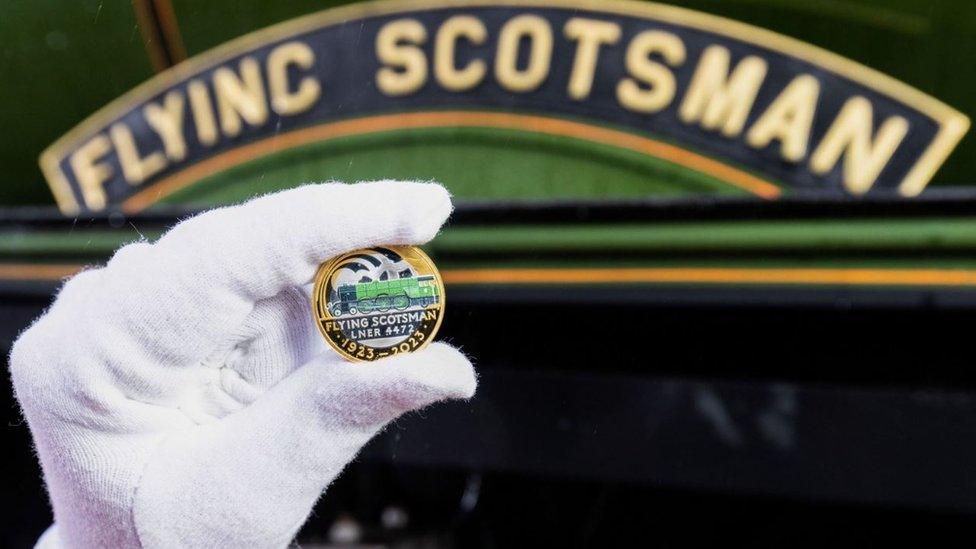Flying Scotsman steam train celebrates 100 years
- Published
Young dancers joined in the celebrations at Waverley Station
The iconic Flying Scotsman steam train first entered service 100 years ago today.
It broke records by hauling the first non-stop London to Edinburgh service in 1928 and became the UK's first locomotive to officially reach a speed of 100mph six years later.
Considered the world's most famous steam train, it has amassed crowds worldwide during tours throughout the United States, Canada and Australia.
An event at Edinburgh Waverley marked the occasion with dancing and poetry.
Poet laureate Simon Armitage read out a poem called The Making Of The Flying Scotsman to celebrate its 100th anniversary year.
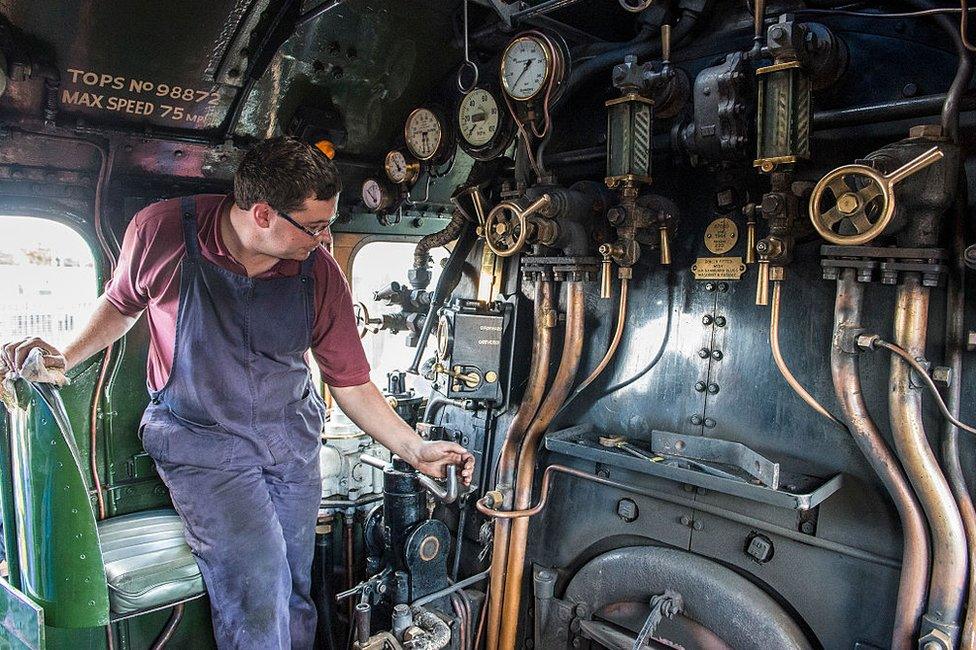
An engineer operates the controls on the footplates of the Flying Scotsman

Flying Scotsman arrives at King's Cross Station after it became the first steam locomotive to officially pass 100mph in 1934
He describes how the world famous steam engine "coughed into life" and features "vast steel circumferences" and "rippling bodywork pouring with sweat".
He rode on the locomotive while writing the poem.
Mr Armitage told BBC Radio 4's Today programme: "There's something very dreamlike about the whole contraption and the experience of standing next to it."
The Poet Laureate marks 100 years of the Flying Scotsman with a new poem
Dancers from the Royal Scottish Country Dance Society performed The Flying Scotsman and the event was rounded off with a set by rock band the Red Hot Chilli Pipers.
The train will spend the rest of 2023 travelling across the country to allow as many people as possible to see it.

The steam train celebrates its centenary

The National Railway Museum maintains the train
Flying Scotsman was in service throughout the golden age of rail.
The 97-tonne locomotive was designed by Edinburgh-born Sir Nigel Gresley and built in Doncaster.
It was among the first 4-6-2 Gresley Pacifics created for the London and North Eastern Railway.
It is the only one of the class that has been preserved to the present day.
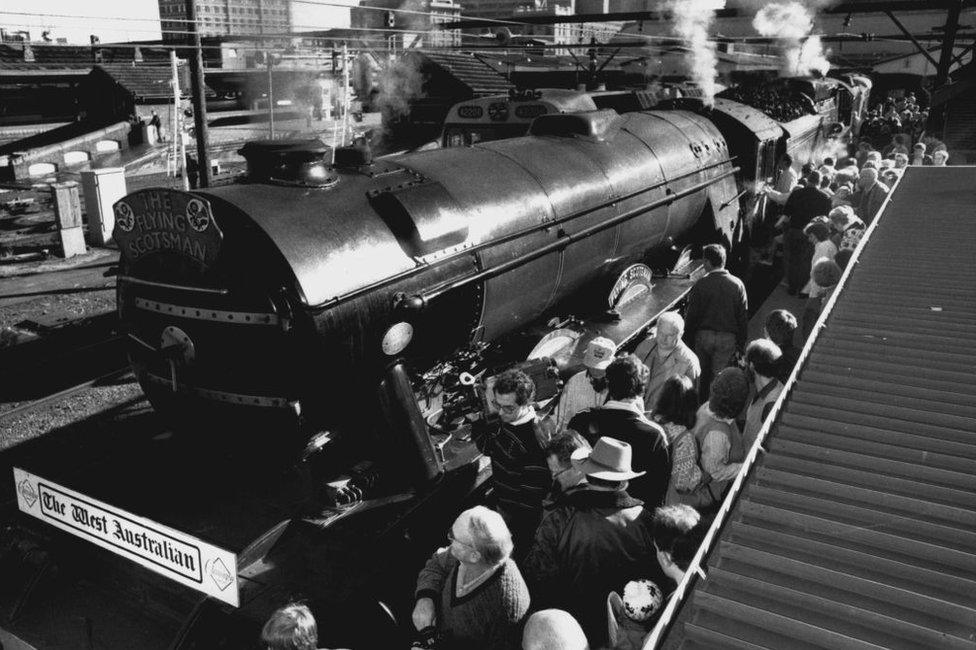
Flying Scotsman goes down under as it prepares to travel from Sydney to Perth
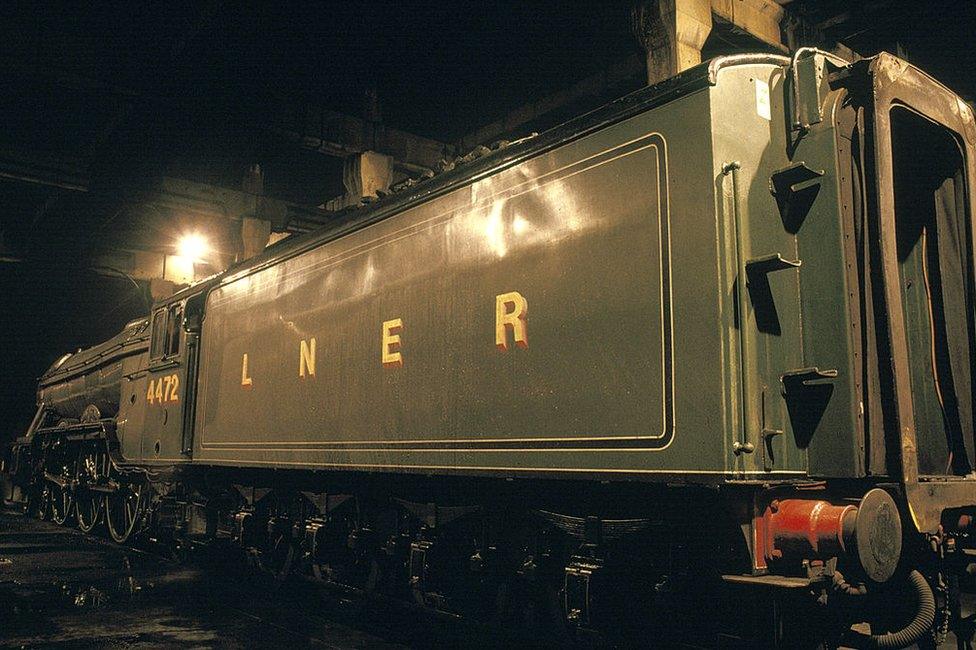
LNER launched the locomotive in 1923
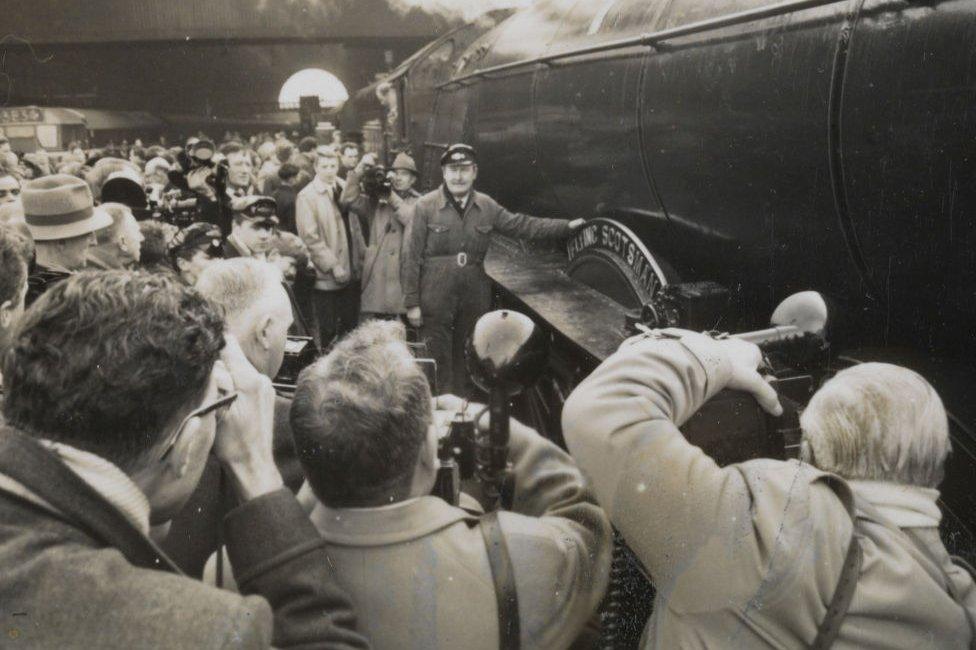
Flying Scotsman's final trip in 1963 before entering an active retirement

The locomotive continued to tour the UK despite leaving LNER
The 70ft locomotive retired from regular service in 1963 after covering more than two million miles.
It changed hands between steam preservation enthusiasts before becoming a working exhibit at the National Railway Museum in York in 2004.
During its retirement from LNER, it toured throughout the United States and Canada from 1969 until 1973 and Australia in 1988 and 1989.
Millions of pounds have been invested in preserving Flying Scotsman, but it cost just £7,944 to build in 1923.
All images are copyrighted.
Related topics
- Published15 May 2016

- Published21 February 2023
